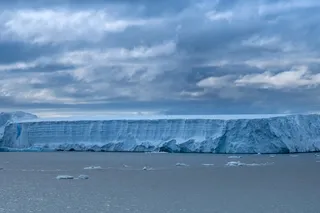In a deep canyon in the foothills of the Himalayas, near the Indian town of Tehri, a thousand-odd workers are building a hydroelectric dam. When it is complete in four years or so, the Tehri High Dam will deliver 2,400 megawatts of electricity to energy-starved northern India. Its location seems perfect: a hydroelectric plant draws its energy from falling water, after all, and the greater the drop, the better. Once the Tehri dam has blocked off the narrow gorge of the Bhagirathi, interrupting that river’s rush toward the Ganges, the water will have a long drop indeed--850 feet from the top of the dam to the canyon floor. Moreover, the 30-mile-long reservoir behind the dam will provide the drinking and irrigation water that Delhi and the rest of the region need to weather the arid months before the summer monsoon. To Indian planners, the Tehri dam makes doubly good sense.
...














